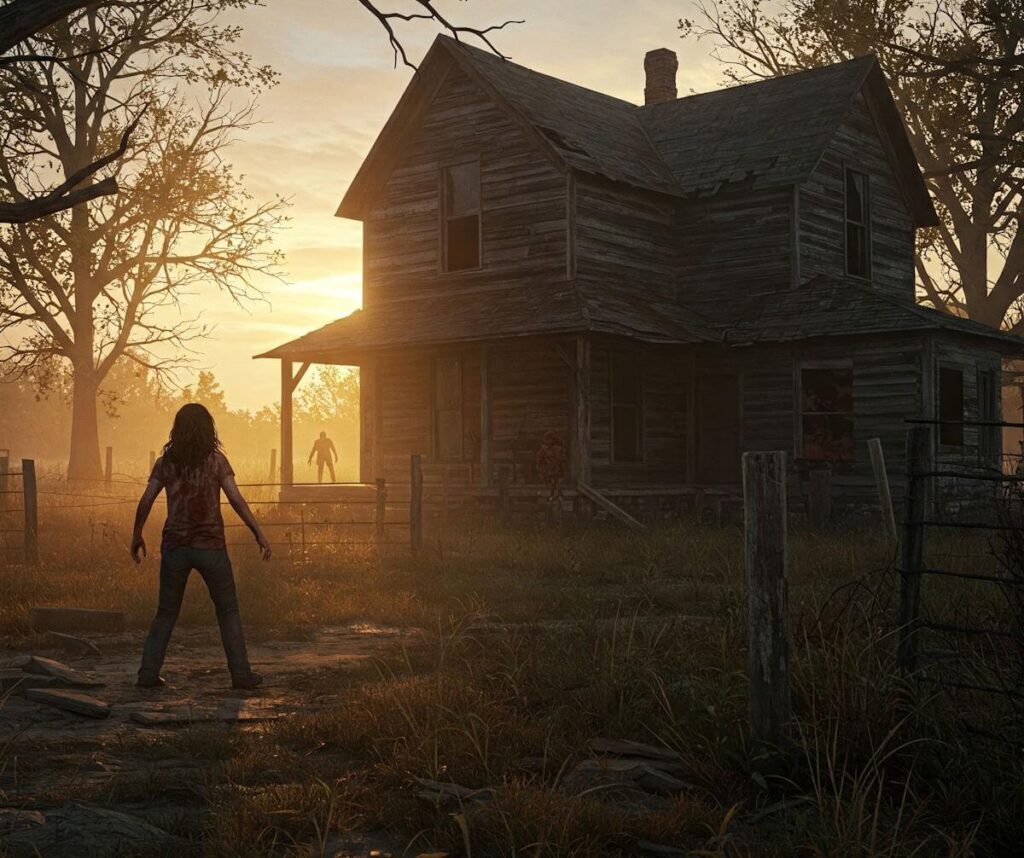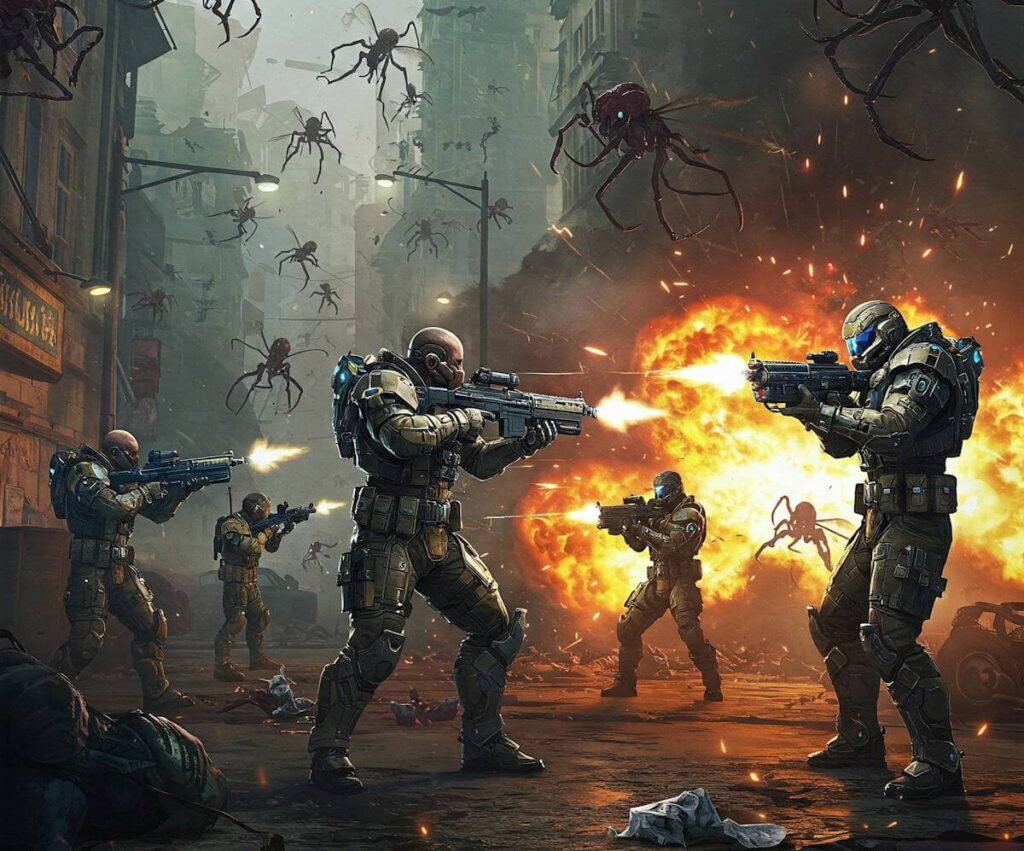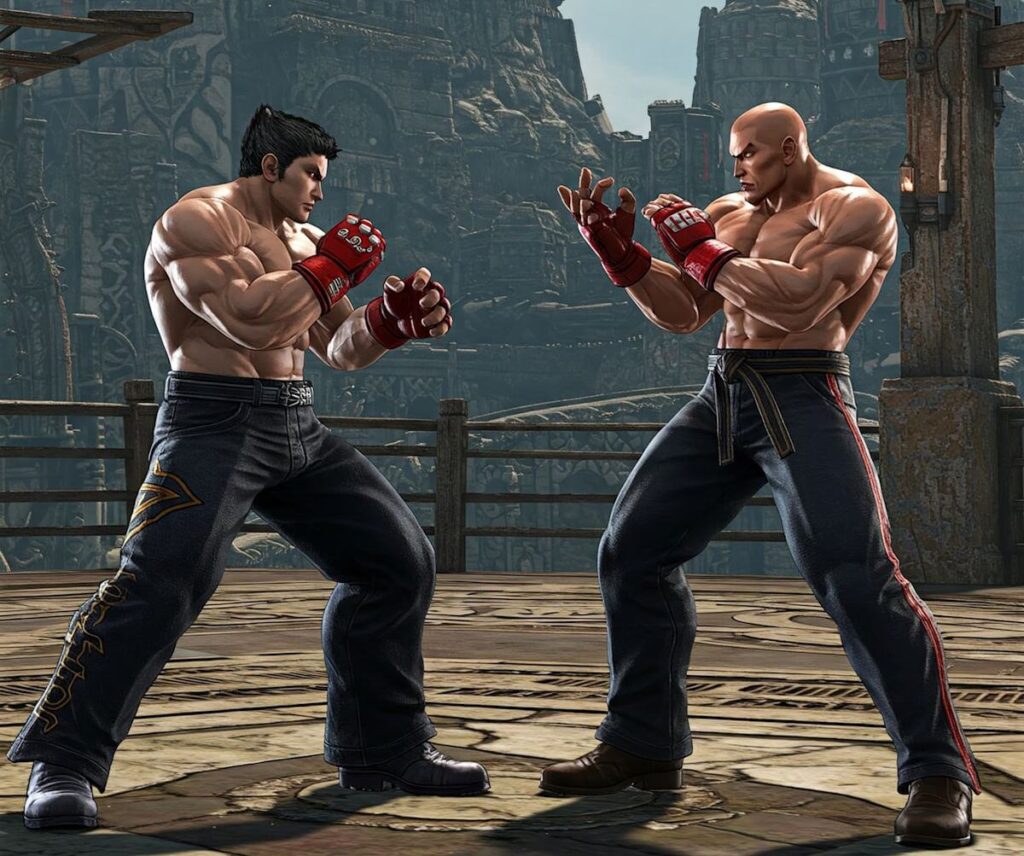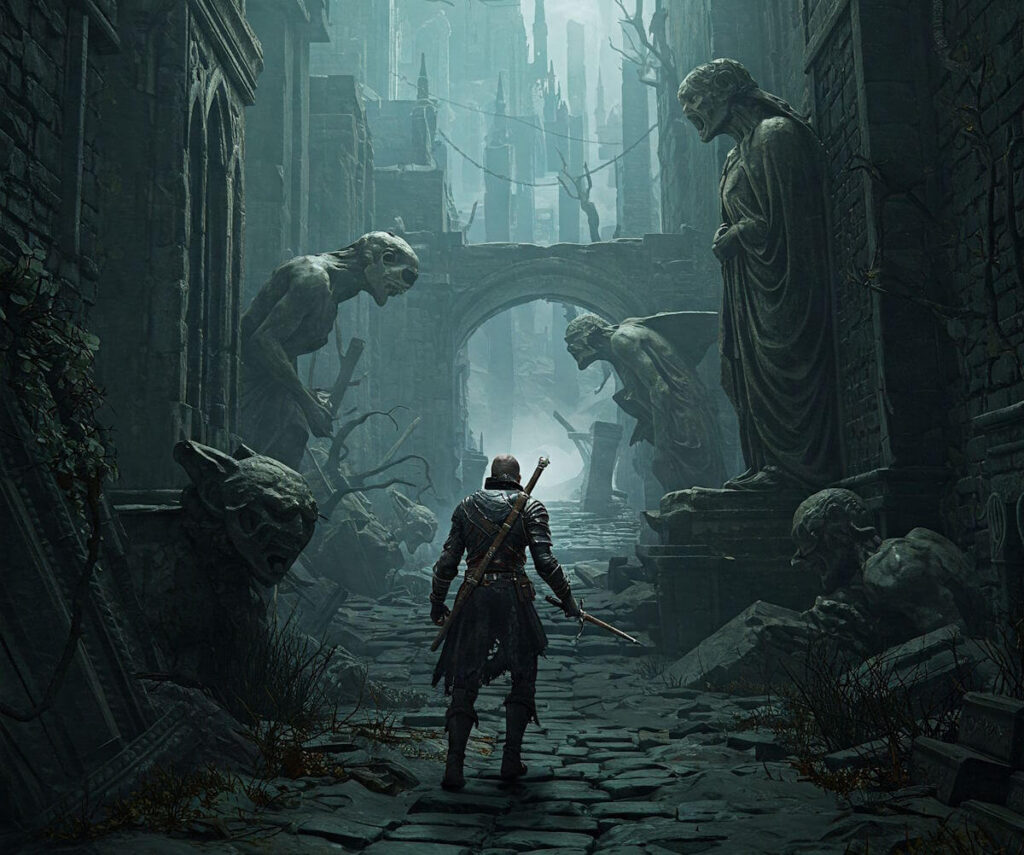The Texas Chain Saw Massacre video game draws inspiration from the iconic horror film released in 1974, which has since become a classic in the genre. Developed by Gun Interactive, the game seeks to capture the chilling essence of the original film while providing players with an engaging multiplayer experience. This adaptation is not merely a recreation of cinematic moments but rather a thoughtful integration of elements that define survival horror games.
Gun Interactive is known for its commitment to authenticity and quality in game development, which is evident in their approach to this project. The development team collaborates closely with the creative minds behind the original film, ensuring that the atmosphere, character design, and overall aesthetic resonate with fans of the horror genre. Drawing from the film’s bleak ambiance and terrifying characters, the game allows players to navigate a world where tiny decisions can lead to survival or demise.
The Texas Chain Saw Massacre game introduces players to a unique asymmetrical multiplayer setup, where one group assumes the roles of survivors attempting to escape, while another player embodies Leatherface, the film’s notorious antagonist. This dynamic creates intense gameplay filled with strategic elements, as survivors must unearth resources and coordinate their escape while evading Leatherface’s relentless pursuit. The gameplay mechanics focus on teamwork, stealth, and tension, effectively translating the film’s horror into an interactive format.
By merging the legacy of the film with contemporary gaming technology, the Texas Chain Saw Massacre video game emerges as a significant contribution to the horror genre. It sets a standard for future adaptations, proving that classic films can transcend their origins and find new life as engaging multiplayer experiences. The developers’ dedication to honoring the source material while innovating for modern gamers ensures that both fans of the film and new players can appreciate this chilling venture into the world of horror gaming.
Understanding Multiplayer Horror Mechanics
Multiplayer horror games have gained significant popularity over the years, largely due to their ability to create immersive and thrilling experiences. The mechanics that make these games effective hinge on several core elements: player dynamics, fear factors, and cooperative gameplay. Each of these components contributes to a heightened sense of tension and involvement, which is essential for any successful horror title.
First, player dynamics play a crucial role in enhancing the multiplayer experience. The social interactions between players create an unpredictable environment, as alliances may form and break during gameplay. In the Texas Chain Saw Massacre, players assume the roles of either victims or the notorious killer, which introduces asymmetrical gameplay mechanics. This dynamic creates a natural tension as players navigate their surroundings, attempting to outsmart one another while dealing with the ever-present threat of the antagonist. The shift between cooperation and betrayal among players adds layers of complexity to the horror experience.
Secondly, the fear factors integrated into multiplayer horror games are instrumental in sustaining player engagement. Atmosphere and sound design are often strategically crafted to elicit fear and unease. The Texas Chain Saw Massacre excels in this regard, utilizing various sound cues that signal danger or impending threats. Lighting effects and environmental design enhance this tension, leading players to remain on edge as they explore the game’s haunting landscapes. Furthermore, the unpredictability of other players’ actions contributes to an overall sense of fear, as participants cannot be certain of each other’s intentions.
Lastly, cooperative gameplay elements are vital for fostering collaboration among players. By promoting teamwork and shared objectives, multiplayer horror games encourage players to strategize collectively, thereby increasing the stakes of every encounter. In Texas Chain Saw Massacre, survivors must work together to escape the killer while gathering resources, which fosters a sense of unity amid chaos. This cooperative aspect ultimately intensifies the emotional investment in the game and enriches the horror experience as players depend on one another to survive.
Character Roles and Abilities
In “The Texas Chain Saw Massacre,” multiplayer gameplay is defined by the distinct roles players can undertake, each offering unique abilities and fostering various strategies within the competitive environment. Players can embody two primary character types: survivors and killers. Understanding the strengths and weaknesses of these roles is essential for maximizing a player’s effectiveness in the game.
Survivors are tasked with evading the relentless pursuit of the killers. Each survivor in the game possesses specific abilities that enhance their chance of escaping. For instance, some survivors may excel in stealth, allowing them to hide effectively and avoid detection. Others might have skills that enable them to heal fellow players or boost the team’s overall morale, thus promoting cooperation in crucial moments. However, survivors typically share a common vulnerability; they are physically weaker against direct confrontations with killers and must rely on strategy and teamwork to survive. Their unique traits encourage players to communicate and devise plans for survival, making teamwork a cornerstone of success.
On the other hand, killers possess distinct powers that escalate the intensity of the gameplay. Each killer features unique attributes that allow them to track and hunt down survivors with deadly efficiency. For instance, some killers might have heightened sensory abilities that make it easier to detect nearby survivors while others may exhibit superior speed, enabling them to close distances rapidly. However, killers are not without disadvantages; they may lack the agility or stealth of survivors, making them susceptible during strategic retreats. This dynamic interplay between survivors and killers underscores the importance of adopting various strategies, thereby enhancing the overall excitement and engagement of the game.
The Environment as a Character
The Texas Chain Saw Massacre game masterfully incorporates its surroundings as a crucial element in the gameplay experience. Much like the original film, the game settings evoke a sense of dread and suspense that serves to enhance immersion for players. The environment functions not merely as a backdrop but as a living, breathing character that influences player actions and decisions. From decrepit farmhouses to overgrown fields, each locale is meticulously designed to echo the haunting atmosphere of the cinematic masterpiece.
One of the most compelling aspects of the game’s environment is its ability to provide hiding spots, traps, and escape routes, which contribute to the strategic depth of gameplay. Players must navigate these spaces carefully, as they can serve as essential avenues for evasion or potential ambush points for the killer. The interactivity with the environment adds layers to each encounter, transforming how players interact with the game. For instance, players may choose to hide behind dilapidated furniture or dive into thick brush to avoid detection, mirroring the survival instincts exhibited by characters in horror films.
The dynamic interplay between characters and their surroundings not only enhances the thrill but also amplifies the overall atmospheric tension. Sound design is vital in this aspect; the creaking of floorboards or rustling leaves can signal nearby threats, creating an urgent need to utilize one’s surroundings effectively. By embedding these elements into the gameplay, developers ensure that the environment remains a central component in what defines the horror experience. As players become attuned to the landscape, they are further drawn into the unnerving vibe that the game consistently delivers, ensuring that the environment is integral to the storytelling.
The Sound Design: Fear and Atmosphere
Sound design plays a pivotal role in shaping the atmosphere within horror games, particularly in titles like The Texas Chain Saw Massacre. The chilling audio landscape serves to envelop players in an unsettling environment, enhancing the fear factor and providing cues that impact gameplay. In this context, the effective use of sound can be the difference between a merely playable experience and one that leaves a lasting impression.
From the moment players enter the game, they are met with a meticulously crafted soundtrack that heightens the sense of dread. The iconic score, which echoes the themes of isolation and danger, is harmoniously interwoven with ambient sounds such as distant chainsaws, rustling leaves, and eerie whispers. These audio elements evoke a visceral response, provoking feelings of anxiety and fear. As players navigate the environment, they must remain acutely aware of their auditory surroundings; these audio cues can signify nearby threats, serve as warnings, or indicate the presence of the infamous Leatherface.
Moreover, the implementation of dynamic soundscapes is noteworthy. Sounds change based on the player’s actions or movements within the game. For instance, running generates a cacophony of footsteps and heavy breathing that contrasts sharply with the haunting silence of stealth. This variability not only increases immersion but also introduces a layer of strategy, as players must decide when to remain quiet or when to escape in panic.
The overall sound design in The Texas Chain Saw Massacre is instrumental in establishing a relentless atmosphere that keeps players on edge. Through meticulously crafted audio cues and ambient effects, the game ensures that each encounter becomes an intense experience, amplifying the horror elements while creating opportunities for both tension and atmosphere. In conclusion, the sound design significantly influences player engagement, setting this title apart in the realm of multiplayer horror games.
Balancing Horror and Fun in Multiplayer
The Texas Chain Saw Massacre offers a unique approach to multiplayer gaming, masterfully intertwining elements of authentic horror with enjoyable gameplay. Achieving a delicate balance between these two aspects presents significant challenges, particularly in a genre where the intentions of the developers must cater to varied player experiences. While horror is central to the game’s identity, it is equally important that players can enjoy their time spent in the game and foster a sense of camaraderie or competition within the multiplayer dynamic.
One of the most effective ways the game strikes this balance is through its gameplay mechanics that create tension without veering into frustration. Each player takes on distinct roles, enabling varied strategies to unfold throughout the gameplay. For instance, as survivors, players must work together to evade the relentless pursuit of the killer, which heightens the horror element without sacrificing enjoyment. Conversely, playing as the killer allows for strategic planning and execution, engaging players in thrilling cat-and-mouse chases that evoke fear while keeping the experience exhilarating.
Moreover, the immersive atmosphere plays a pivotal role in enhancing the horror while ensuring the gameplay remains enjoyable. The game’s visuals and sound design contribute to a sense of dread, while the explicitly defined objectives keep the players invested in their roles. This need for cooperation and communication amongst survivors fosters a team-oriented spirit crucial to the enjoyment factor in multiplayer settings. The game’s design offers players the chance to experience terror collaboratively, which not only amplifies the horror experience but also encourages social interaction, thereby maintaining the fun aspect of multiplayer gameplay.
Ultimately, it is this balancing act—authentic horror interlaced with enjoyable cooperative dynamics—that positions The Texas Chain Saw Massacre as a standout in the genre, redefining multiplayer horror experiences for players everywhere.
Community and Social Interaction
The Texas Chain Saw Massacre game thrives on its vibrant community and social interaction, elements that enrich the overall experience. Players engage in various online formats, ranging from cooperative gameplay where teamwork is essential to competitive matches that elevate the thrill of survival. The essence of multiplayer environments is the necessity for communication and collaboration among players, creating a dynamic atmosphere where strategic planning and execution become pivotal.
In multiplayer horror settings like this one, social dynamics begin to emerge as players form alliances or rivalries, enhancing both enjoyment and investment in the game. Teamwork is not merely suggested but required, as surviving the nightmares that unfold within the game often hinges on players working together, sharing resources, and covering each other’s backs. As players develop camaraderie or friendly competition, they contribute to the game’s community by sharing their experiences via social media platforms, forums, and streaming services. Such interactions help forge a sense of belonging among fans, thus knitting a tighter community around the game.
This community aspect does not only impact player experiences but also influences game development. Player feedback is crucial to the evolution of The Texas Chain Saw Massacre; developers pay close attention to community suggestions and concerns, which have led to important updates and patches. This responsiveness fosters trust and satisfaction within the player base, as individuals feel their voices are heard and valued. Through social interaction, players can collectively shape the game’s future, ensuring that it remains engaging and relevant.
Ultimately, the interactivity of the game’s community fosters a rich tapestry of experiences, serving both as a foundation for gameplay and as a catalyst for ongoing enhancements. The symbiotic relationship between the community and the developers guarantees that The Texas Chain Saw Massacre remains an exhilarating multiplayer experience for all its players.
Comparisons with Other Multiplayer Horror Titles
The Texas Chain Saw Massacre presents a unique take on the multiplayer horror genre, distinguishing itself from other popular titles such as Dead by Daylight and Friday the 13th. One notable similarity is the core premise of a small group of survivors attempting to evade a fearsome killer. However, the gameplay mechanics in Texas Chain Saw Massacre introduce a distinct flavor that enhances the overall experience.
In Dead by Daylight, players take on the roles of survivors who must repair generators while evading the killer. This emphasizes strategic teamwork and stealth, often resulting in a cat-and-mouse dynamic. In contrast, Texas Chain Saw Massacre places a greater emphasis on narrative-driven gameplay, immersing players in the horrific atmosphere inspired by the iconic film. Survivors must navigate the game’s environment, using their unique abilities to evade capture while simultaneously uncovering the dark past of the infamous family. This narrative layer creates a richer context for the horror elements present in the game.
Moreover, the mechanics in Texas Chain Saw Massacre are more grounded in realism. Players must manage resources, such as the limited use of tools and hiding spots within the map, which adds a realistic tension to the gameplay. This contrasts with the somewhat exaggerated abilities seen in Friday the 13th, where players can utilize unique powers and items almost as if they were in a cartoonish setting. As a result, the horror experience in Texas Chain Saw Massacre feels more visceral, leveraging its roots in authentic terror.
In summary, while sharing foundational elements with other multiplayer horror titles, Texas Chain Saw Massacre carves out its niche through its deep narrative integration, realistic gameplay mechanics, and immersive atmosphere. Such features not only heighten the horror element but also engage players on a more emotional level, setting it apart within the genre.
Future of Multiplayer Horror Games
The landscape of multiplayer horror games is poised for significant evolution, particularly inspired by titles such as The Texas Chain Saw Massacre. As developers analyze player engagement and preferences, a number of key trends are expected to shape the future of this genre. One prominent direction is the integration of advanced artificial intelligence that tailors the game experience to individual players’ behaviors and preferences. This level of personalization may enhance the immersion and replayability that horror games thrive on, allowing players to confront different challenges and fears each time they engage with a title.
Moreover, the expansion of cross-platform play is likely to become more prevalent, enabling a wider community of players to interact regardless of the hardware they possess. This inclusivity can help build vibrant online communities and foster competition that invigorates gameplay. As seen in The Texas Chain Saw Massacre, multiplayer dynamics that encourage collaboration and strategic gameplay—such as team-based objectives—will become increasingly important. Future horror games may leverage this by introducing varied roles with unique abilities, allowing for a richer and more engaging experience.
In terms of technological advancements, virtual reality (VR) and augmented reality (AR) are anticipated to play a critical role in reshaping how players interact in horror settings. By immersing players deeper into the game environment, these technologies can amplify fear and suspense. Furthermore, the evolution of cloud gaming may facilitate more expansive game worlds that would be otherwise unachievable due to console limitations, fostering richer narratives and environments within multiplayer frameworks.
Overall, as the multiplayer horror game genre continues to evolve, the influences from successful titles like The Texas Chain Saw Massacre will guide developers towards innovative mechanics and creative storytelling methods, ultimately enhancing the player experience and engaging a broader audience.





